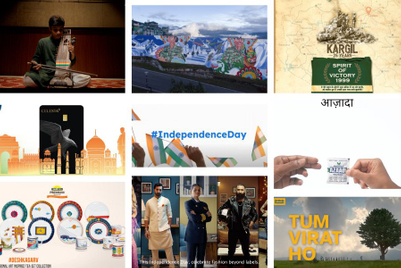
While the Olympics is a celebration of global athletics, it is also an event that offers brand sponsors myriad opportunities to tell their brand story or articulate their purpose in a unique, connected way.
With the games now over and sponsors back to their day jobs, WE took a look at the performance of APAC brands to see what lessons could be learnt.
Throughout the course of the Olympics there was a lot of activity and noise—some impactful, some not. Through it all, there were three trends that the winning brands leveraged to generate buzz and excitement for themselves.
Build your narrative
The Olympics presented brand sponsors with a big platform on which to tell their story. Brands that enjoyed the most success were those that took the opportunity to combine what was happening on the ground, with often unpublicised aspects of their brand—and did so differently to others.

For instance, Amul, the Indian cooperative, customised a series of Amul adverts to represent the winners of different sports. This showcased Amul’s ability to differentiate, be original, and receive unique social engagements.
Optus also effectively pushed unique messages throughout the event. In particular, it received a significant amount of engagement for a closing post that recognised the success of Team Australia and united the nation around the #FanUpAus hashtag.
Inopportunely, some of the larger brands in APAC, like Singapore Airlines, Toyota and Cadbury’s, only focused the majority of their marketing efforts on celebrating athletes' wins with congratulatory posts. The issue with this approach? No brand did it in a way that was unique to its own story.
As a result, social sites quickly filled with one congratulatory post after another, packing the social echo chamber with the same content to the point that nothing stood out. Had a brand chosen to follow its own narrative, we would have likely seen more engagement and content that felt more sincere and closer to the brands’ stories.
Live life in the moment
No one can predict Olympic results ahead of time, so it makes sense that brands need to do a significant amount of preparation in establishing processes and procedures required to make fast content and activation decisions so they can live in the moment.
This is clearly a challenge for brands large and small, and despite the hundreds of events that took place over the two-week period, many brands struggled to be flexible, move quickly and connect with any level of immediacy. While we saw many references to wins and medals from the majority of brands, there was very little being done 'in the moment’.
Most brands scored well when they celebrated in real time, but missed opportunities to be more dynamic in these moments—for example driving content and commentary that unfolded alongside the events. Global brands such as Atos and Omega in particular had access to a wealth of data yet failed to capitalise on this advantage.
Be prepared
Samsung, Adidas, Woolworths, Amul, and Optus all had clear content strategies for the games this year, which allowed them to be highly visible and to drive consistent engagement throughout the event. These brands spent time ensuring that their content spoke to many different audiences and to the fans of many different events.
Success was also born from these brands’ ability to activate and distribute content with regular cadence, but also when and where it was most needed. Samsung wins a gold medal for utilising innovative communication strategies. For example, its 'School of Rio' videos were pushed out at regular intervals to help drive engagement.
This meant the brand always had something to share and allowed it to score well in terms of sentiment reaction, engaging with fans and a wider audience.
It wasn’t plain sailing for all sponsors though. Brands need to understand that in social media a week is much longer than it seems, so a lesson for all brands is to have backup plans for when content and ideas start running thin. Or when some ideas don’t exactly go as planned.
Singapore Airlines had a photo incident that caused quite a bit of backlash, and there were ways to minimise the damage. Always making sure that there’s a plan B or a crisis plan in place is key to success.

In a region where offline activation is a key part of the marketing strategy, brands need to consider how to drive more consistency between online and offline. For example, FairPrice in Singapore did roadshows and small-scale events through the country, but there was little presence online to follow these activities through.
Similarly, in Hong Kong, Liberty Insurance ads were spotted on public transport, but online communication was not consistent, and focused on ambassador mentions and indirect references of the brand.
Despite missed opportunities, it is encouraging to see an increasing number of Asian brands investing in the event and standing out. This is a positive trend that I expect will continue as the C-suite in Asia continues to realise the value of investing in brands and how that connects to more impactful customer engagement and ultimately hard business outcomes.
Matthew Lackie is executive vice president, Asia-Pacific, at WE Communications


.jpg&h=334&w=500&q=100&v=20250320&c=1)

.jpg&h=334&w=500&q=100&v=20250320&c=1)

.jpg&h=334&w=500&q=100&v=20250320&c=1)



.png&h=334&w=500&q=100&v=20250320&c=1)







.png&h=268&w=401&q=100&v=20250320&c=1)
